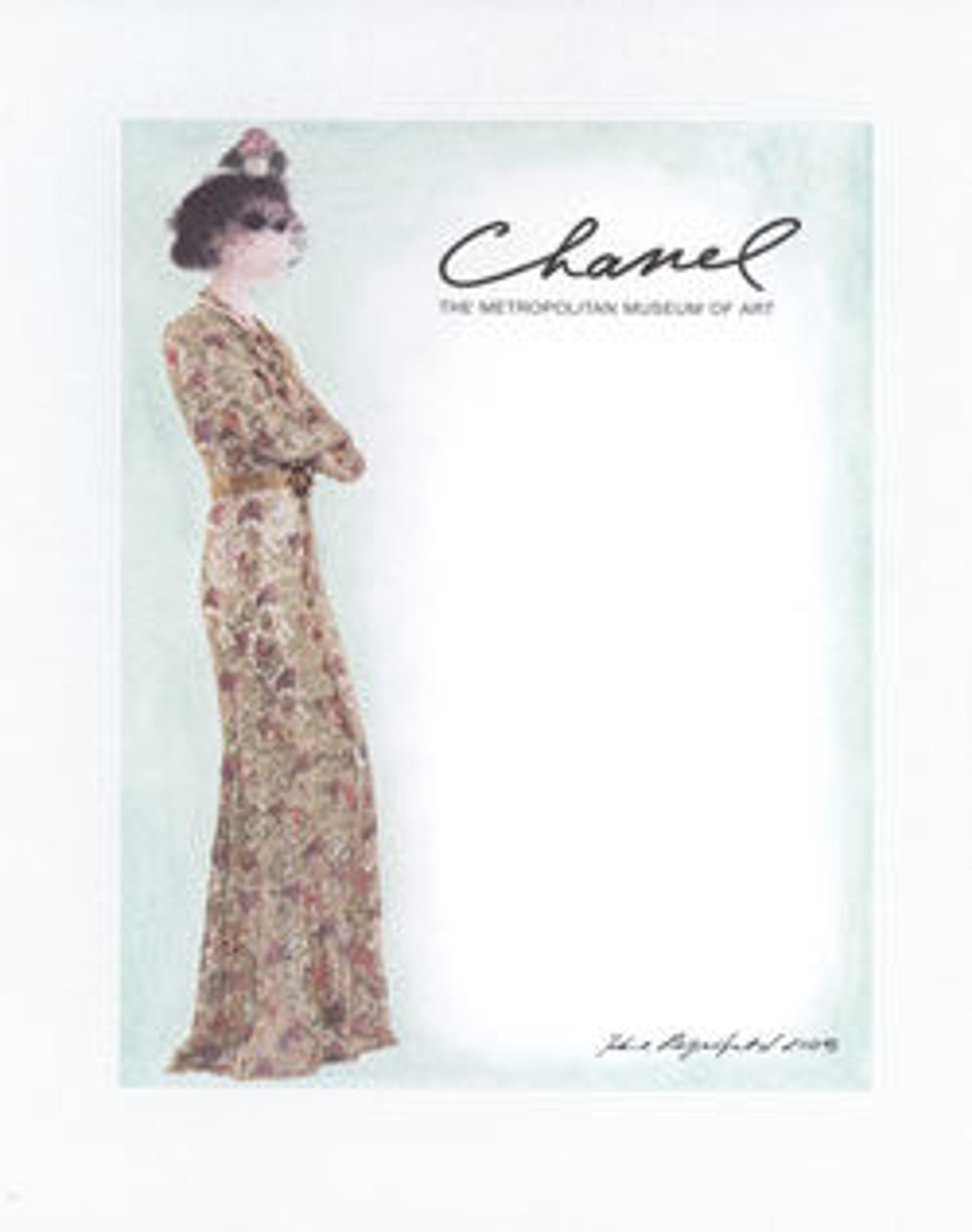Evening dress
Chanel's ascription of beauty to the Gypsy first manifested itself in the late 1920s, when she produced a range of Gypsy-like jewelry that hinted at Byzantine inspiration. Later, in 1935, Chanel further upended social and sartorial conventions by dressing as a Gypsy to Mrs. Reginald "Daisy" Fellowes' Bal Orientale. Reprising this look for her spring/summer 1939 collection, she produced a range of Gypsy-style dresses that were demure in silhouette, but bold in their formal borrowings from lingerie and underwear. Most daring were crinoline overskirts and, even more audacious, the revelation of broderie anglaise underslips. Other dresses from the collection featured lace ruffles at the bodice and the hem of the overskirt and underskirt, a design detail that re-occurred in her autumn/winter 1940 collection. A new feature, however, was her use of red, white, and blue - the colors of the Tricolor or French Flag. Originally an embracement of romanticized marginality, the Gypsy had become an expression of patriotism.
Artwork Details
- Title: Evening dress
- Design House: House of Chanel (French, founded 1910)
- Designer: Gabrielle Chanel (French, Saumur 1883–1971 Paris)
- Date: 1939
- Culture: French
- Medium: silk, cotton, rayon
- Credit Line: Gift of Mrs. John Chambers Hughes, 1958
- Object Number: C.I.58.34.18a–c
- Curatorial Department: The Costume Institute
More Artwork
Research Resources
The Met provides unparalleled resources for research and welcomes an international community of students and scholars. The Met's Open Access API is where creators and researchers can connect to the The Met collection. Open Access data and public domain images are available for unrestricted commercial and noncommercial use without permission or fee.
To request images under copyright and other restrictions, please use this Image Request form.
Feedback
We continue to research and examine historical and cultural context for objects in The Met collection. If you have comments or questions about this object record, please complete and submit this form. The Museum looks forward to receiving your comments.
